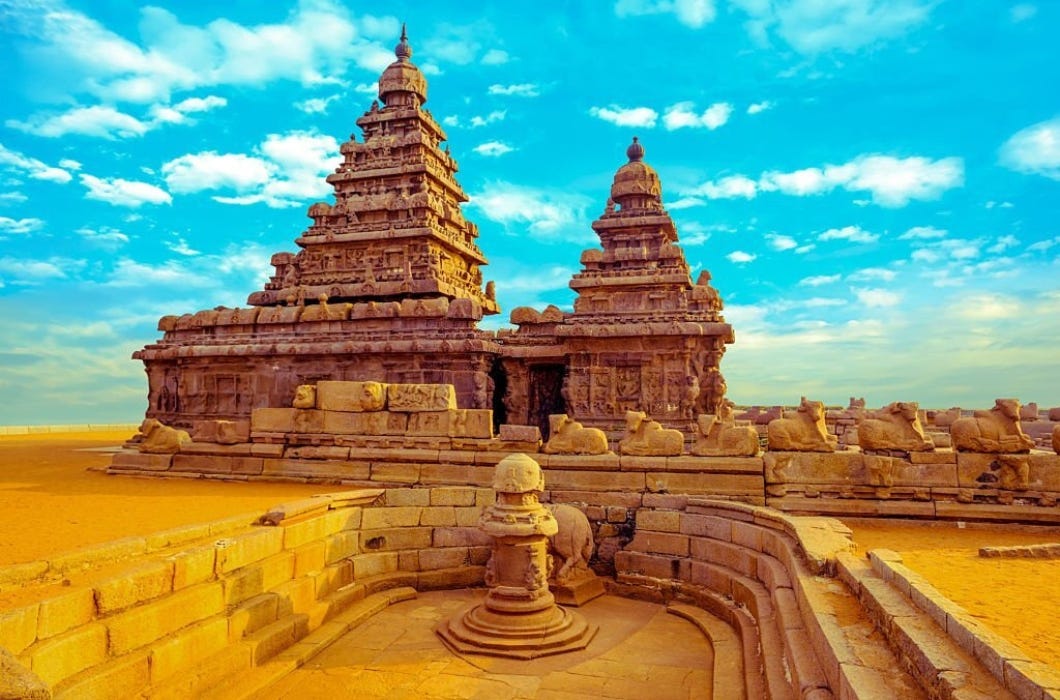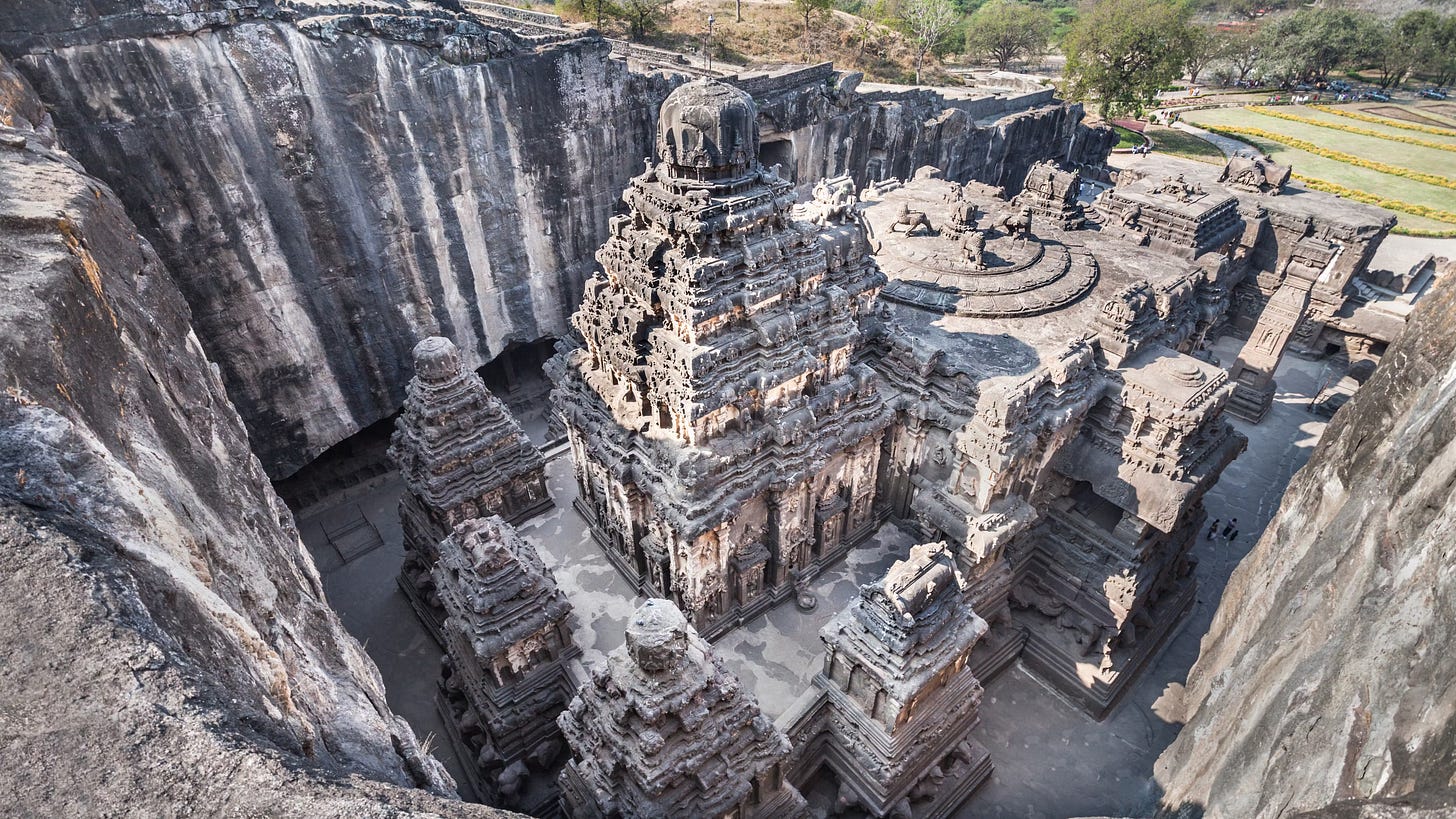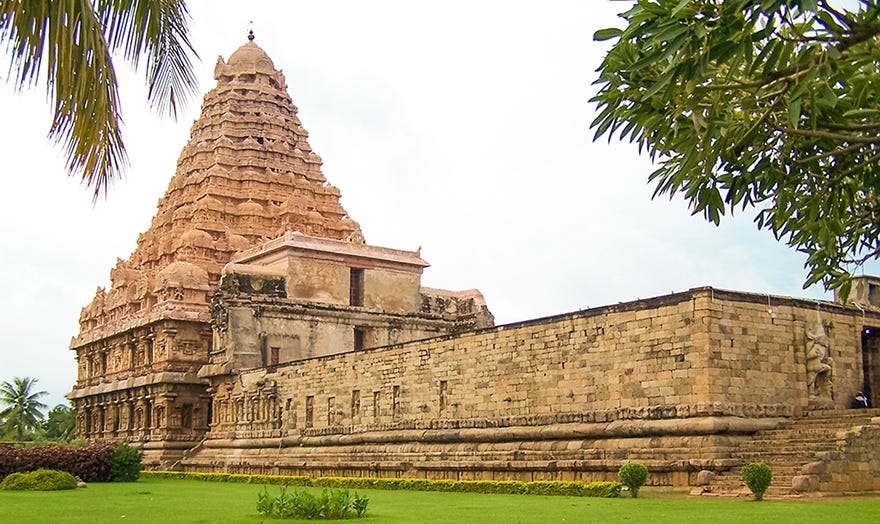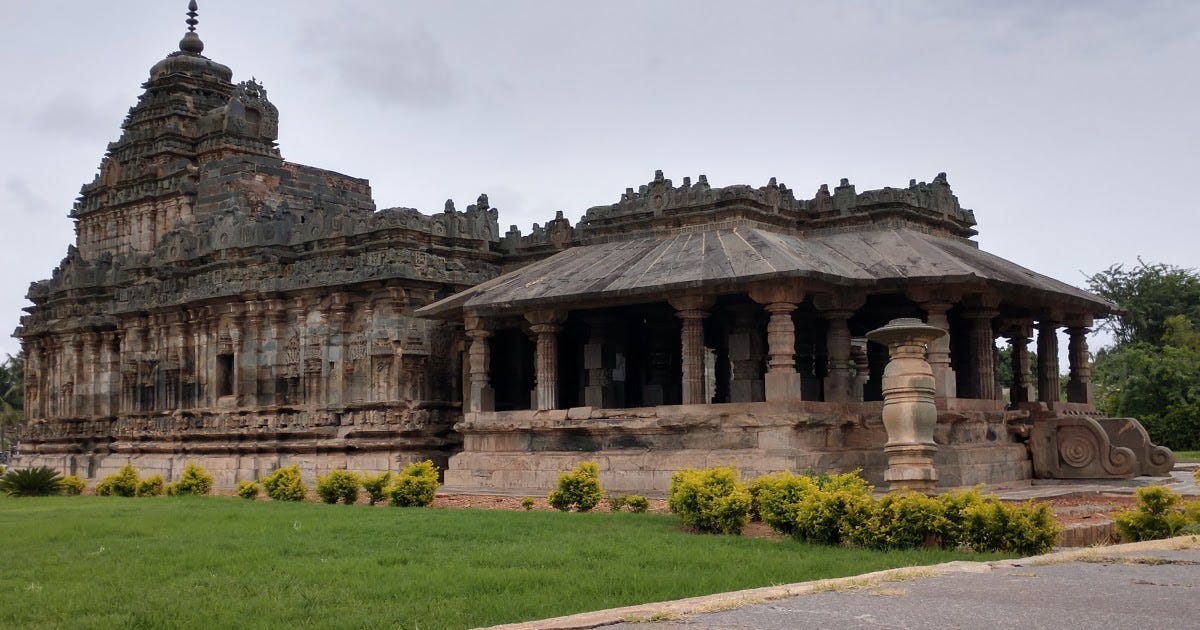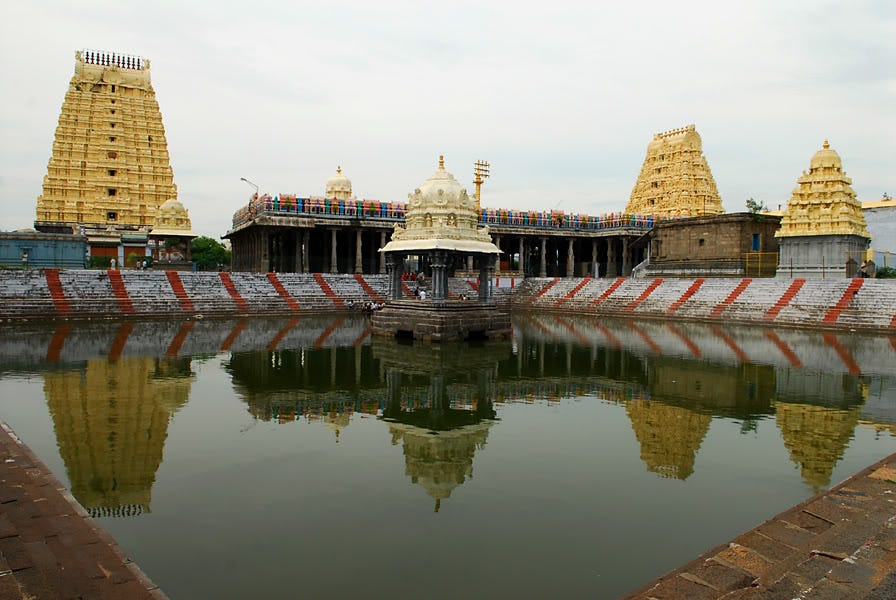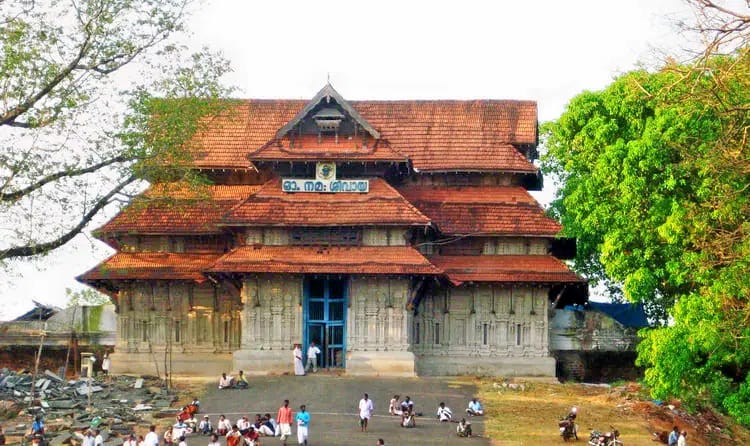India’s spiritual landscape is a living chronicle of devotion, artistry, and endurance. Across millennia, master builders and devotees have created architectural marvels that continue to inspire awe. Even after more than a thousand years, these temples still stand resilient — not merely as stone structures, but as vibrant centers of faith.
Here, Dharmikvibes brings you seven such temples that embody the eternal heartbeat of Indian spirituality.
1. Shore Temple, Mahabalipuram (Tamil Nadu)
Era: Early 8th century CE
Dynasty: Pallava (King Narasimhavarman II – Rajasimha)
Deities: Lord Shiva and Lord Vishnu
Standing serenely on the shores of the Bay of Bengal, the Shore Temple is among the earliest examples of structural stone temples in South India. Built during the reign of the Pallava kings around 700–728 CE, it marked a shift from rock-cut cave sanctuaries to freestanding stone architecture.
The temple complex consists of three shrines — two dedicated to Shiva and one to Vishnu, who reclines majestically in Anantashayana posture. Its twin towers once guided mariners approaching the Coromandel Coast.
Rituals and Legacy:
Though weathered by sea winds and salt, the temple remains a site of worship and hosts rituals during the Mahabalipuram Dance Festival, when classical dancers perform with the sea as backdrop. The temple’s precise alignment allows sunrise to illuminate the main sanctum — a symbolic fusion of nature and divinity.
Travel Tip: Visit at dawn to watch the rising sun gild the granite spires. Wheelchair access can be arranged with local guides, as paths are stone-paved but navigable.
2. Kailasa Temple, Ellora (Maharashtra)
Era: c. 756–773 CE
Dynasty: Rashtrakuta (King Krishna I)
Deity: Lord Shiva
If human devotion could carve mountains, it would look like the Kailasa Temple of Ellora. Hewn entirely from a single basalt cliff, this monolithic wonder required removing over 200,000 tons of rock — all by hand.
The temple is modeled after Mount Kailash, the mythical abode of Shiva, and showcases intricate sculptures of gods, demons, animals, and celestial dancers. Two-storey courtyards, massive pillars, and life-sized elephants give it an awe-inspiring scale.
Rituals and Living Tradition:
Even after 1,200 years, the temple continues to host Mahashivaratri celebrations, drawing devotees and scholars alike. The sound of bells echoing in the carved courtyards adds a surreal depth to the experience.
Architectural Insight: The engineering brilliance lies in the “top-down” excavation — craftsmen started carving from the summit downward, ensuring symmetry.
Travel Tip: A moderate level of walking is required; plan for shaded breaks. Electric vehicles are available from the Ellora entrance for comfortable access.
3. Brihadisvara (Big Temple), Thanjavur (Tamil Nadu)
Era: 1010 CE
Dynasty: Chola (Raja Raja Chola I)
Deity: Lord Shiva (Brihadisvara)
A UNESCO World Heritage site, this Granite Giant represents the zenith of Chola architecture. The vimana (tower) rises nearly 66 meters, crowned by an 80-ton stone dome that still mystifies engineers.
Built entirely of granite — transported from quarries 50 km away — the temple exemplifies precision engineering, balance, and devotion. Intricate frescoes depicting Nataraja (the cosmic dancer) still adorn its inner walls.
Rituals:
Daily pujas continue, accompanied by rhythmic nadaswaram music and chanting. The annual Rathotsavam (chariot festival) and Maha Shivaratri draw thousands. Despite its scale, the sanctum retains an intimate, peaceful atmosphere.
Cultural Significance:
This temple inspired countless South Indian structures and is considered the first “complete” expression of Dravidian temple architecture.
Travel Tip: Early morning visits offer cool weather and fewer crowds. There are shaded corridors and seating areas suitable for elderly visitors.
4. Brihadisvara Temple, Gangaikonda Cholapuram (Tamil Nadu)
Era: c. 1035 CE
Dynasty: Chola (Rajendra Chola I)
Deity: Lord Shiva
Built by Rajendra Chola I to commemorate his victorious march to the Ganges, this temple was conceived as a spiritual twin of Thanjavur’s Big Temple. “Gangaikonda” literally means “the one who brought the Ganga.”
Its architecture is more graceful, with a slightly shorter but more ornate vimana. The sculptures depict the king’s military exploits and divine blessings in equal measure.
Rituals:
Regular worship continues, preserving traditions of the Chola era. Special abhishekam ceremonies are held during Aadi Perukku and Maha Shivaratri.
Travel Tip: The temple complex is tranquil and less crowded — ideal for leisurely exploration and meditation. Wheelchair access is feasible via the western entrance ramp.
5. Brahma Jinalaya, Lakkundi (Karnataka)
Era: 1007 CE
Dynasty: Western Chalukya (Queen Attimabbe)
Faith: Jainism
A gem of Jain heritage, the Brahma Jinalaya is one of the earliest and finest examples of Western Chalukyan architecture. Commissioned by Queen Attimabbe, this temple is dedicated to Neminatha Tirthankara.
Constructed in soapstone, its delicate carvings include floral friezes, dancing maidens, and geometric motifs. The temple’s symmetrical plan reflects the Jain philosophy of balance and order.
Rituals:
Even today, Jain monks and devotees visit for Samayika (meditation) and Pratikraman rituals. Its peaceful silence and fine acoustics foster inner reflection.
Travel Tip: The temple’s modest size and flat terrain make it ideal for senior devotees seeking a serene, contemplative stop.
6. Ekambareswarar Temple, Kanchipuram (Tamil Nadu)
Era: 7th–8th century CE (expanded by later Cholas and Vijayanagar kings)
Deity: Lord Shiva (as Ekambareswarar)
Kanchipuram, the “City of a Thousand Temples,” houses one of its grandest sanctuaries — the Ekambareswarar Temple, dedicated to Shiva as the element of Earth (Prithvi Lingam) among the five Pancha Bootha Sthalas.
Legend says Goddess Parvati created a lingam from sand under a sacred mango tree still thriving in the courtyard, believed to be over 3,500 years old.
Rituals:
Daily abhishekam, aarti, and deity processions maintain ancient traditions. The Panguni Uthiram festival in March-April celebrates the celestial marriage of Shiva and Parvati.
Architecture:
The 59-meter Raja Gopuram (gateway tower) dominates the skyline — built by Krishnadevaraya of Vijayanagar in the 16th century, yet seamlessly blending with its ancient core.
Travel Tip: The temple grounds are vast, so use the inner circuit for short walks. Assistance can be arranged at the entrance for comfortable mobility.
7. Vadakkunnathan Temple, Thrissur (Kerala)
Era: Possibly 7th century CE
Dynasty: Chera (legend credits Parashurama with its founding)
Deity: Lord Shiva
Nestled amid lush greenery, the Vadakkunnathan Temple exemplifies Kerala’s traditional wooden architecture — tiled roofs, murals, and sanctum encircled by tall stone walls.
Its murals, depicting the Mahabharata, are among the most exquisite in India. The temple is unique in that the main Shiva lingam is always covered with ghee — layer upon layer from centuries of abhishekam — forming a solid mound said to emit a faint, divine fragrance.
Rituals and Festivals:
The temple is central to the Thrissur Pooram, Kerala’s grandest festival, featuring majestic caparisoned elephants and percussion orchestras. Though the temple itself remains closed to non-Hindus, its outer courtyards welcome all to witness the devotion.
Travel Tip: The premises are wheelchair accessible with assistance, and nearby hotels provide restful accommodation.
Echoes of Eternity
From the sea-washed shores of Mahabalipuram to the green heart of Kerala, these temples stand as living museums of devotion, engineering, and art. Each stone narrates a story — of empires that rose and fell, of artisans who sculpted their prayers, and of communities that have preserved their faith for over a millennium.
In visiting these timeless shrines, one doesn’t merely walk through history — one walks into eternity.


